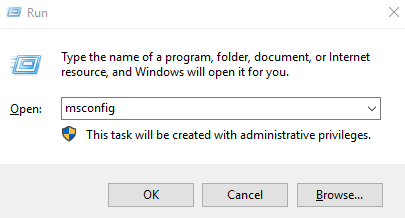
- Conexant hd audio driver failed to install install#
- Conexant hd audio driver failed to install drivers#
- Conexant hd audio driver failed to install update#
- Conexant hd audio driver failed to install driver#
- Conexant hd audio driver failed to install archive#
Conexant hd audio driver failed to install driver#
Wow I have massive issues with this driver since I tried updating to a newer windows version on my laptop. If you still don't want to have the driver on your PC, you can follow this guide again to remove the driver. However, no issue has been noticed on my side when using the driver with this Windows version, so it seems the issues reported by Microsoft only happen during and inmmediately after the update. UPDATE: After some time with the Windows Update, the Conexant driver might re-install again. On the window that pops-up, go to the Recording tab, right-click on the microphone and go to Properties > Levels and change the microphone volume and the microphone amplifying to your liking. To fix this, you can go to Settings app > System > Audio > Related settings options (on the top right corner) > Sound Control Panel.
Conexant hd audio driver failed to install update#
Once the update appears, you can update without any problems (in my side I've got zero errors or blue screens, as opposed to what has been told with the Conexant driver).Īnd even tho it might be just something of my particular laptop, you might get some low volume levels when using the microphone Microsoft driver. Something to notice is that the May 2020 update won’t unlock automatically and you might have to wait even a few days for Windows to realize you no longer have a problematic setup (if you want to wait less, you can also use the Windows 10 Update Assistant). If asked, DO NOT restart your PC this time.
Conexant hd audio driver failed to install drivers#
On the window that pops-up, go to Browse my computer for driver software > Let me pick from a list of device drivers on my computer and choose the "High Definition Audio Device" driver. R ight-click on the device and select “Update driver”. In case the above method didn't worked for you, there's an alternative one:


Restarting your PC should no longer reinstall the driver. On the next step, the Conexant driver should now appear for you to mark it and hide the update. When the process has finished, click on “Hide updates”. Open the wushowhide tool ( direct link ) from Microsoft.Ĭlick on Advanced Options and uncheck “Apply fixes automatically”Ĭlick on Next and let it look for pending updates. To find it, look for the one(s) with Conexant as their Provider. Using the open-source tool DriverStoreExplorer, delete the driver by looking for it on the list, marking it, marking the “Force Deletion” option on the right and then clicking on “Delete Driver(s)”. This should re-detect your soundcard and use the Microsoft audio driver instead of the Conexant one.Ĭheck that the folder C:\Program Files\CONEXANT doesn’t exist. On the Device Manager, click on Action > Look for hardware changes. When the confirmation dialog pops-up, check the “Delete the driver software for this device” as well. R ight-click on the device and select “Uninstall device”. If you switched it to the Microsoft driver before, switch it back to the Conexant one using the “Update driver” option and restart your system if asked. Under the “Sound, video and game controllers” category there should be the Conexant device. Go to Settings > Apps and features and uninstall the Conexant SmartAudio app if you have it. However, if you uninstall the driver using the Device Manager, remove the driver from the local Driver Store and then run the wushowhide tool, because Windows Update will detect the driver as a non-downloaded update, it will finally show up on the list as an update you can block from installing, which will finally stop the automatic re-installation of the driver. Using the Windows Update Show/Hide tool (wushowhide.diagcab) won’t work in this situation, since it is only able to detect and block updates that haven’t been downloaded on the system. Then if you uninstall the driver on the Device Manager by using the “Uninstall device” option, you will actually be able to remove the driver from your system, but the copy stored on the Driver Store won’t be deleted by that, so Windows Update will re-install it again on start-up using that copy. If you try to uninstall the driver using the Conexant uninstaller, it just disables the driver but it doesn’t uninstall it.
Conexant hd audio driver failed to install install#
And no guide mentions this.īy default, Windows prefers the Conexant driver over the default one from Microsoft, making Windows Update to download and install it automatically. There, Windows has a local catalog of all the drivers that have been installed on your machine as well as a copy of them, and one of its uses is to provide the user with the ability to swap between certain drivers without having to reinstall them (the list of drivers that appears when you use the “Choose from a list of drivers available on your PC” option on the Device Manager is a mirror of the Driver Store).

Conexant hd audio driver failed to install archive#
Windows has sort of a local driver archive on each PC named “Driver Store”.


 0 kommentar(er)
0 kommentar(er)
